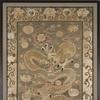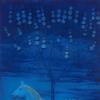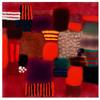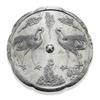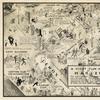Cooper Hewitt Puts Its 200,000-Object Collection Online
- NEW YORK, New York
- /
- September 04, 2016
Cooper Hewitt, Smithsonian Design Museum has completed a comprehensive year-and-a-half project to digitize its collection, with more than 200,000 objects now accessible online via collection.cooperhewitt.org. The user-friendly interface enables all audiences—casual browsers, designers, curators, educators, students and scholars—to explore and examine one of the most diverse and comprehensive collections of design works in existence.
“As America’s design museum, Cooper Hewitt is committed to making its collections, knowledge and resources as accessible and useful as possible,” said Caroline Baumann, director. “A transformative gift from the Morton and Barbara Mandel Family Foundation made possible the digitization of our entire collection, and I am very proud that Cooper Hewitt accomplished this goal in just 18 months—an unprecedented achievement in the museum world. People of all ages, from anywhere in the world, can now mine the riches of the collection in ingenious and imaginative ways.”
In collaboration with the Smithsonian’s Digitization Program Office, the mass digitization project transformed a physical object (2-D or 3-D) from the shelf to a virtual object in one continuous process. At its peak, the project had four photographic set ups in simultaneous operation, allowing each to handle a certain size, range and type of object, from minute buttons to large posters and furniture. A key to the project’s success was having a completely barcoded collection, which dramatically increased efficiency and allowed all object information to be automatically linked to each image.
Characterized by sustainable high-throughput rates coupled with consistently high-quality digital captures, the project digitized an average of 600 objects per day, with publication to the website in as little as 48 hours. Online visitors can search the collection through traditional fields, such as time periods or countries, and also take a deep dive through color, size or type of object. A random button allows for an exciting journey of discovery, inspiring learning and sharing.
Cooper Hewitt’s groundbreaking in-gallery experiences and capabilities are also fueled by the mass digitization project. The Collection Browser, available on seven tables installed throughout three floors of the museum, gives visitors access to nearly 9,000 objects in the museum’s collection, including those currently on view in the galleries and those recently digitized. The largest tables allow up to six users to simultaneously explore high-resolution images of collection objects, select items from the “object river” that flows down the center of each table, zoom in on object details and learn about an object’s history and related objects organized by design theme and motif. The new interactive Pen further enhances the visitor experience with the ability to “collect” and “save” information, as well as create original designs on the tables. Using the unique web address printed on the visitor’s ticket, everything collected via the Pen becomes accessible outside of the museum on any smartphone or computer after his or her visit. Visitors can create a museum account that will allow them to access and build their collections over future visits.
The mass digitization effort is the latest addition to a robust series of initiatives and Smithsonian-wide partnerships undertaken to broaden digital access to the collection and transform the museum’s website into a leading global-design research and educational resource. In 2012, the museum launched the Object of the Day blog series, deployed a public prototype release of the new collection database and released the collection metadata. Through the Open Source section of the website, visitors can download the collection data and public API, 3-D models of the Carnegie Mansion, the Cooper Hewitt typeface and source code written by the museum’s in-house team.
The mass digitization of the museum’s permanent collection is made possible by the Morton and Barbara Mandel Family Foundation.






